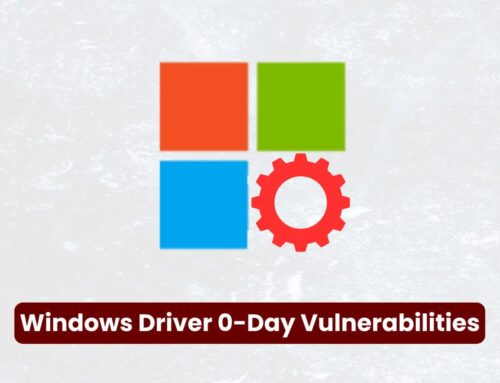
New JSCEAL Attack Targeting Crypto App Users To Steal Credentials and Wallets
The cryptocurrency landscape, while offering unparalleled opportunities, remains a prime target for sophisticated cybercriminals. A new, stealthy threat has emerged on the horizon, specifically engineered to pilfer digital wallets and credentials from unsuspecting users. Dubbed “JSCEAL,” this campaign represents a significant escalation in malware sophistication, leveraging compiled JavaScript files and Node.js to operate with alarming stealth and scale. Understanding JSCEAL is not just about awareness; it’s about safeguarding your digital assets in an increasingly hostile environment.
Understanding the JSCEAL Attack Campaign
The JSCEAL campaign distinguishes itself through its innovative use of readily available technologies – compiled JavaScript and Node.js – which allows it to bypass traditional security measures. Unlike many malware strains that rely on complex, custom executables, JSCEAL blends into common web development environments, making detection incredibly challenging. Its primary objective is the surreptitious theft of cryptocurrency wallet details and user credentials, often operating unnoticed for extended periods.
This technique of leveraging compiled JavaScript for malicious purposes is particularly insidious. Malicious code, once compiled, loses its human-readable form, making static analysis and reverse engineering significantly more difficult. When combined with Node.js, a popular runtime environment, it allows the malware to execute system-level commands, interact with the file system, and communicate with command-and-control (C2) servers with ease, all while appearing to be a legitimate application or script.
How JSCEAL Operates: A Multi-Stage Threat
The JSCEAL attack chain is meticulously crafted, focusing on stealth and persistence. While specific initial compromise vectors can vary, common approaches include:
- Malicious Downloads: Disguising the JSCEAL malware as legitimate software or updates, often distributed via compromised websites, phishing emails, or unofficial app stores.
- Supply Chain Compromise: Injecting malicious code into legitimate software libraries or components that developers unknowingly incorporate into their applications.
- TrickBot Integration: Reports indicate a potential link or evolution from the notorious TrickBot malware, suggesting a well-resourced and interconnected criminal enterprise behind JSCEAL. This lineage implies a sophisticated infrastructure for distribution and data exfiltration.
Once executed, JSCEAL employs advanced evasion techniques, including obfuscation and anti-analysis measures, to avoid detection by antivirus software and security analysts. It then proceeds to harvest sensitive information, including private keys, seed phrases, and login credentials for various cryptocurrency platforms and digital wallets.
The Impact: Why JSCEAL is a Significant Threat
The widespread distribution and stealth capabilities of JSCEAL make it a significant threat to the cryptocurrency ecosystem. Its ability to operate largely undetected means victims may not realize their assets have been compromised until it’s too late. The financial implications for individuals can be devastating, leading to irreversible loss of funds and digital assets.
Furthermore, the reliance on common web technologies like JavaScript and Node.js lowers the barrier to entry for cybercriminals, while simultaneously raising the bar for defenders. This signifies a trend where attackers are increasingly leveraging widely used and trusted platforms to mask their malicious intent.
Remediation Actions and Protective Measures
Protecting yourself from sophisticated threats like JSCEAL requires a multi-layered security approach. No single solution is foolproof, but a combination of best practices can significantly reduce your risk exposure.
- Software Updates: Regularly update your operating system, web browsers, cryptocurrency applications, and all installed software. These updates often include patches for vulnerabilities that malware like JSCEAL could exploit.
- Antivirus and Endpoint Detection and Response (EDR): Utilize reputable antivirus software and consider an advanced EDR solution that can detect and respond to suspicious behavior, not just known signatures. Keep these solutions updated.
- Verify Sources: Only download software and applications from official and trusted sources. Be extremely wary of unsolicited emails, pop-ups, or websites promising free or discounted software, especially related to cryptocurrency.
- Two-Factor Authentication (2FA/MFA): Enable 2FA or Multi-Factor Authentication (MFA) on all your cryptocurrency exchanges, wallets, and other critical online accounts. This adds an extra layer of security, making it harder for attackers to gain access even if they steal your credentials.
- Hardware Wallets: For significant cryptocurrency holdings, consider using a hardware wallet (cold storage). These devices store your private keys offline, making them immune to online malware attacks.
- Network Segmentation: For organizations, segment networks to limit the lateral movement of malware if a compromise occurs.
- Employee Training: Educate users about phishing, social engineering tactics, and the dangers of downloading software from untrusted sources.
- Regular Backups: Maintain regular, encrypted backups of your cryptocurrency wallet files and other critical data. Store these backups securely offline.
- Monitor Accounts: Regularly review your transaction history on cryptocurrency exchanges and wallets for any unauthorized activity.
Tools for Detection and Mitigation
Organizations and individuals can leverage various tools to enhance their security posture against threats like JSCEAL. While specific JSCEAL-tailored tools are still evolving, general endpoint security, network monitoring, and threat intelligence platforms are crucial.
| Tool Name | Purpose | Link |
|---|---|---|
| Endpoint Detection & Response (EDR) Solutions | Advanced threat detection and response on endpoints, behavioral analysis, real-time monitoring. | [Vendor Specific – e.g., CrowdStrike, SentinelOne] |
| Next-Generation Antivirus (NGAV) | Signature-less detection, machine learning, and AI-driven analysis to identify new and evolving threats. | [Vendor Specific – e.g., Microsoft Defender for Endpoint] |
| Threat Intelligence Platforms | Aggregates and analyzes threat data, providing insights into new attack campaigns and indicators of compromise (IoCs). | [Vendor Specific – e.g., Recorded Future, Mandiant Threat Intelligence] |
| Network Intrusion Detection/Prevention Systems (NIDS/NIPS) | Monitors network traffic for suspicious patterns and potential malicious activity. | [Vendor Specific – e.g., Suricata, Snort] |
| Node.js Security Scanners | Tools to identify vulnerabilities in Node.js applications and dependencies. | [e.g., Retire.js, npm audit] |
Conclusion
The emergence of JSCEAL underscores a critical shift in cybercriminal strategies, moving towards more advanced and evasive techniques that leverage common development environments. Its ability to operate largely undetected highlights the imperative for vigilant cybersecurity practices and continuous adaptation of defensive strategies. Staying informed, implementing robust security measures, and exercising caution in all online interactions, especially concerning cryptocurrency, are paramount to protecting your digital assets from this evolving threat.





